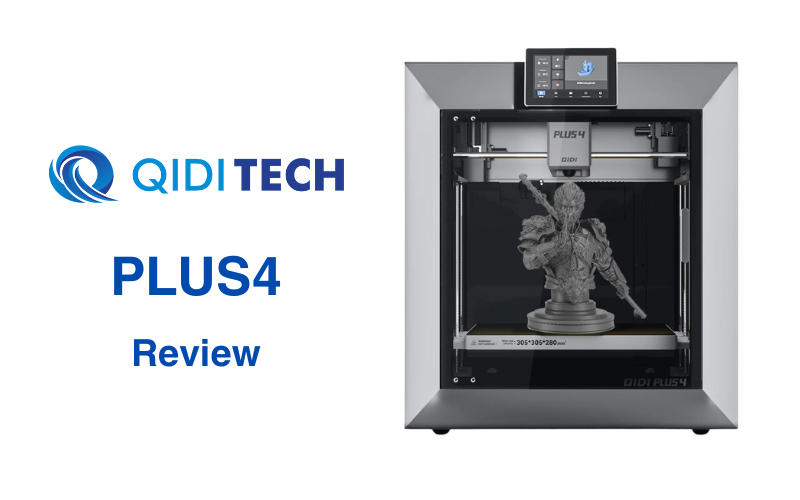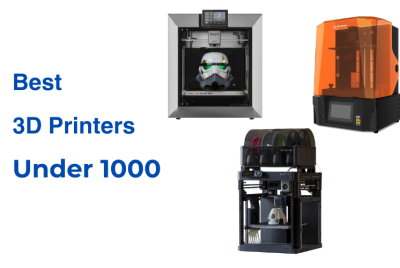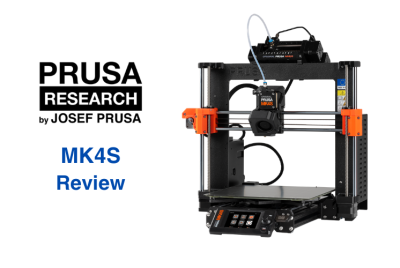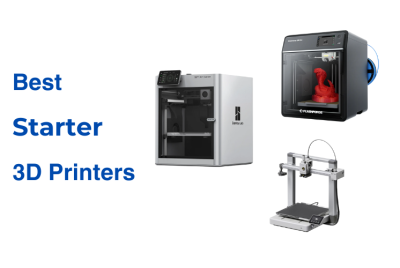QIDI Plus4 Review
QIDI Tech has been around since 2014, and over the years, it’s become a trusted name in 3D printing. They made a strong first impression by making affordable machines that were easy to use. From there, they’ve continued to improve, releasing printers for beginners figuring out their first prints and professionals who need reliable tools for their work.
Their lineup has something for almost everyone. The X-series, for example, is popular for dual extrusion printing, while the i-series is great for simpler, plug-and-play setups. They’ve even branched into larger, industrial-grade printers for advanced users who need more flexibility with materials. QIDI has made printers to give makers options that balance cost and performance and keeping it simple.
In this article, we’re taking a close look at the QIDI Plus4, which made our list of the Best 3D Printers Under $1000. We’ll talk about what makes it a solid choice in this price range, covering its design, features, and how it compares to similar models. If you’re looking for an affordable printer that doesn’t skimp on performance, this is one to check out.
Design and Build Quality
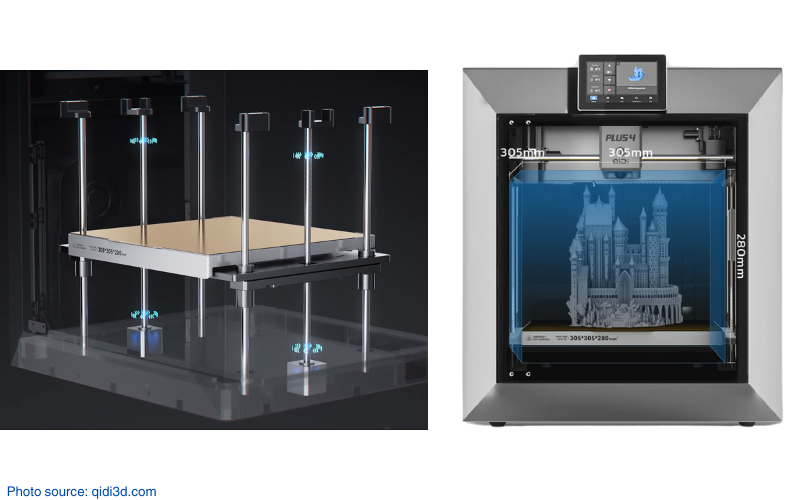
The QIDI Plus4 has a 305 x 305 x 280 mm build volume. You can print mid-sized projects without needing to dedicate an entire workbench to the printer.
One of the most noticeable upgrades is in the mechanics. Dual independent motors paired with 10mm linear shafts gives the printer smooth and accurate movements. The 6mm aluminum print bed is a nice addition, too, offering a stable surface that stays flat over time. It’s these small details that help avoid print issues like warping.
The printer comes with a dual-sided textured PEI plate, which makes removing prints much easier. The CoreXY system and upgraded belts also contribute to steady performance, cutting down on vibrations and keeping prints consistent. Using the QIDI Plus4 is easy, thanks to its 5-inch touchscreen with an updated interface.
Key Features and Specifications
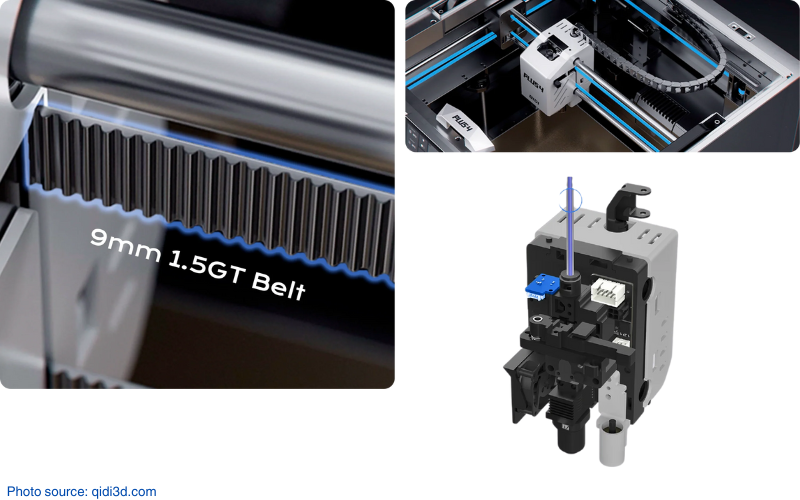
The QIDI Plus4 brings together a lot of useful features and solid specs to make 3D printing easier and more versatile. With a build volume of 305 x 305 x 280 mm, it’s big enough for larger projects. The automatic leveling takes the hassle out of getting started. The high-temp nozzle, which heats up to 370°C, and the upgraded bimetal hotend let you work with materials like carbon fiber filaments and nylon without a problem.
The active chamber heating keeps things steady at up to 65°C, which is a big help for tricky materials that need consistent temperatures. Its CoreXY design, paired with speeds up to 600mm/s and features like input shaping, means your prints stay smooth and accurate. Plus, the QIDI Plus4 offers plenty of ways to control it. You can use Wi-Fi, Ethernet, USB, or its 5-inch touchscreen—and the QIDI app lets you check in on your prints remotely. With its big filament compatibility and support for multiple slicing programs, this printer keeps things simple while delivering reliable results.
| Key Features | Specifications |
|---|---|
| Full-Auto Calibration | Build Volume: 305 x 305 x 280 mm³ |
| Advanced Toolhead and Nozzle | Hotend Temperature: Up to 370°C |
| Active Chamber Heating | Bed Temperature: Up to 120°C |
| New Toolhead Cooling System | Speed: Up to 600mm/s |
| Multi-Material Compatibility | Acceleration: ≤20,000mm/s² |
| Full Mobile Control | Nozzle Diameter: 0.4mm (0.2/0.6/0.8mm Optional) Filament Diameter: 1.75mm |
| QIDI Box Compatible | XY Structure: CoreXY |
| Upgraded Machine Drive System | Connectivity: Wi-Fi 2.4G/Ethernet/USB |
| 5-inch HD Screen | Supported Filament: PLA, ABS, ASA, PETG,TPU,PA, PC, Carbon/ Glass Fiber Reinforced Polymer,etc. |
Comparisons
QIDI Plus4 vs Bambu Lab X1 Carbon
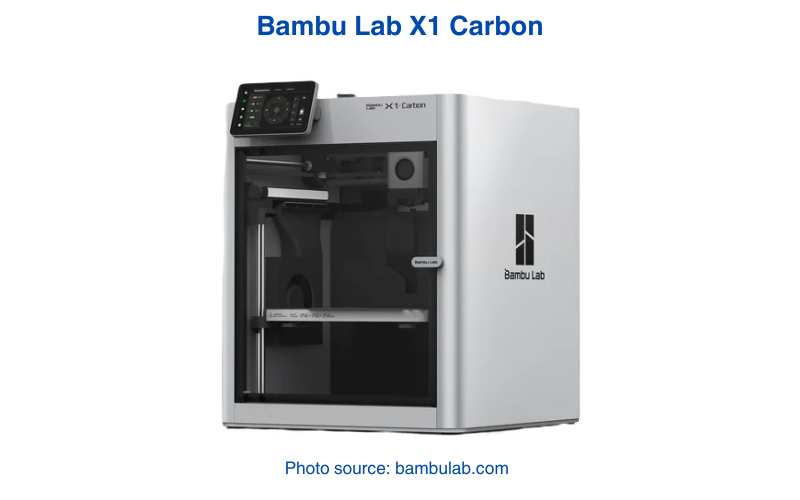
The QIDI Plus4 and Bambu Lab X1 Carbon are both solid printers, but they aim for different types of users. The Plus4 is a great all-rounder for advanced materials at a lower price. While the X1 Carbon is geared toward professionals.
- Printing System: Both printers use CoreXY for smoother and faster movements. The X1 Carbon adds features like AI-assisted monitoring and advanced auto-calibration, which help fine-tune prints. The Plus4 keeps things simpler but still delivers reliable and fast results.
- Build Volume: The Plus4 has a slightly bigger build area at 305 x 305 x 280 mm, while the X1 Carbon offers 256 x 256 x 256 mm. If you need the extra room for larger projects, the Plus4 might be the better choice.
- Material Compatibility: The Plus4 can handle tougher materials thanks to its 370°C nozzle and active chamber heating, which are great for carbon fiber and nylon. The X1 Carbon also supports a range of materials, but its 300°C nozzle doesn’t match the Plus4’s high-temp capabilities.
- Speed and Features: The X1 Carbon is built to be fast with advanced tools like AI monitoring and auto bed leveling. The Plus4 also delivers fast prints—up to 600mm/s—and keeps prints smooth with features like input shaping.
QIDI Plus4 vs Creality K1 Max
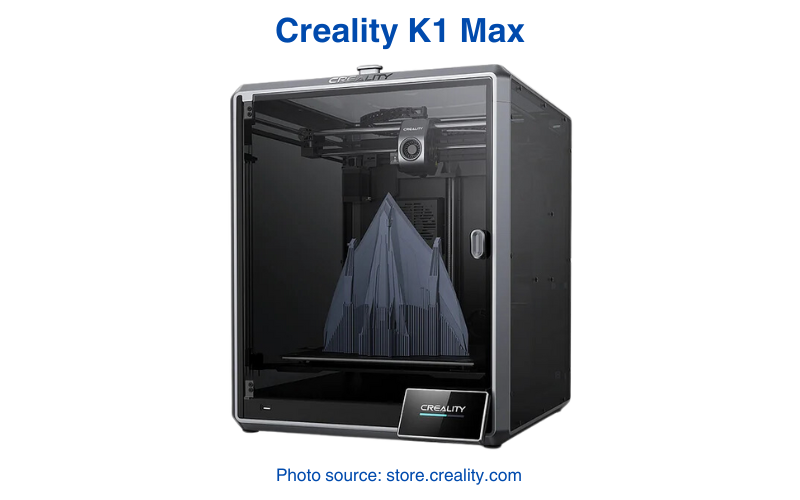
The QIDI Plus4 and Creality K1 Max are similar in what they offer, but they take slightly different approaches. The Plus4 balances speed, material compatibility, and ease of use. The K1 Max, on the other hand, leans heavily into high-speed printing.
- Printing System: Both use CoreXY motion systems, so they’re fast and efficient. The Plus4 focuses on reliable results with fewer extra features, while the K1 Max is all about speed and high acceleration.
- Build Volume: If you’re printing tall objects, the K1 Max has an edge with a build volume of 300 x 300 x 350 mm. The Plus4’s 305 x 305 x 280 mm volume is better for wider projects, so it depends on the type of prints you plan to make.
- Material Compatibility: The Plus4’s 370°C nozzle and active heating give it the edge for high-temp materials like nylon and carbon fiber. The K1 Max handles a variety of filaments too, but it doesn’t have the same level of control for advanced materials.
- Speed and Features: The K1 Max is designed for high-speed printing, with a focus on fast acceleration. The Plus4 is fast too—up to 600mm/s—but it also prioritizes smoother results with input shaping to reduce vibrations.
Real World Applications
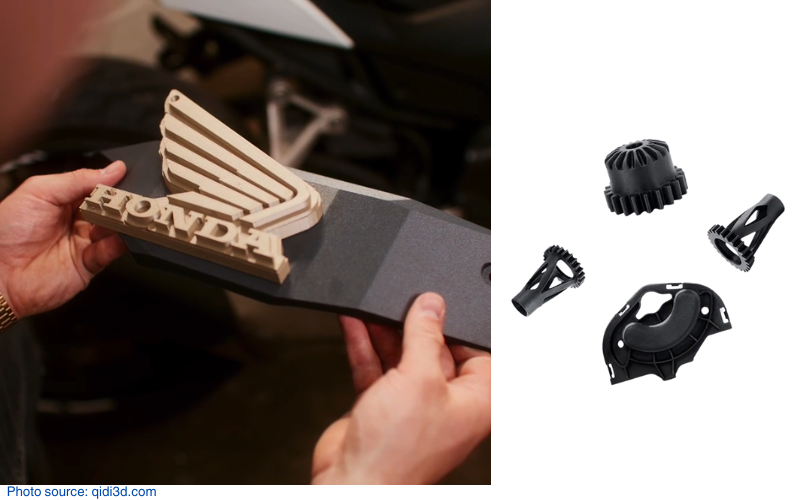
The QIDI Plus4 is designed to print all kinds of projects. Here’s how it fits into different real-world scenarios:
- Prototyping and Design: If you’re into creating prototypes, this printer can print tough materials like carbon fiber or nylon. The large build volume means you can print bigger parts in one go. This cuts down on assembly time and keeping your designs more seamless.
- Functional Parts and Repairs: Need a replacement part or a quick repair? The Plus4 is great for printing strong, functional components. Its heated bed and high-temp nozzle make it easy to create durable pieces that can actually handle some wear and tear.
- Cosplay and Hobby Projects: This printer’s speed and build volume are perfect for larger props or detailed models. Removing finished prints is simple with the textured PEI plate, so you can spend more time creating and less time wrestling with your projects.
Final Thoughts
The QIDI Plus4 is a solid choice if you’re looking for a 3D printer that balances performance and usability. It’s packed with features like a CoreXY motion system, a high-temp nozzle, and active chamber heating, which open up a lot of possibilities for printing different materials and tackling bigger projects. The automatic bed leveling and simple touchscreen controls take a lot of the hassle out of setup. You can connect in multiple ways—Wi-Fi, mobile app, ethernet and USB.
For under $500, the QIDI Plus4 punches above its weight. It’s a great option for hobbyists working on creative projects, or anyone wanting a machine that can handle more advanced materials without being overly complicated. If you want a printer that lets you focus on creating instead of troubleshooting, this one’s definitely worth checking out

